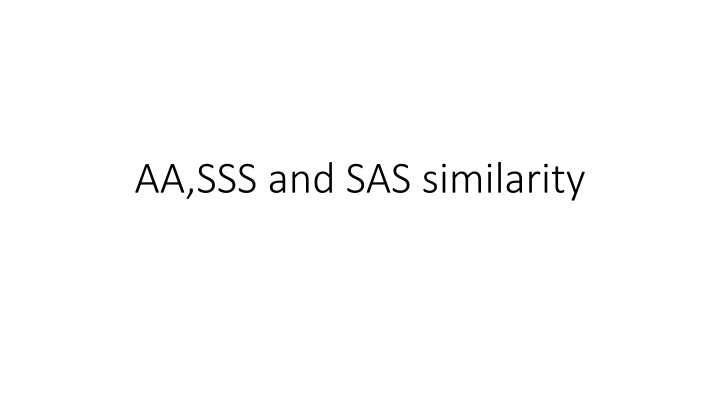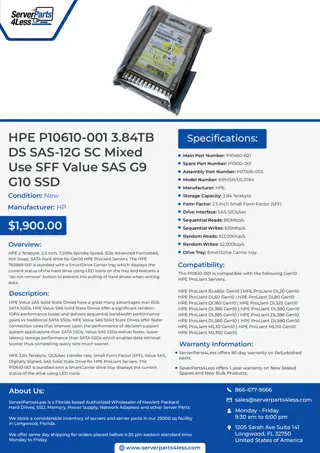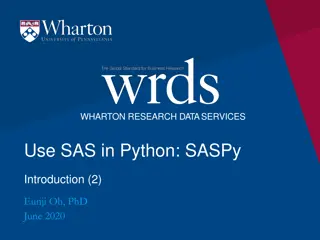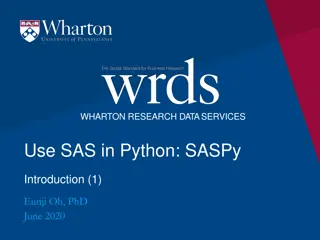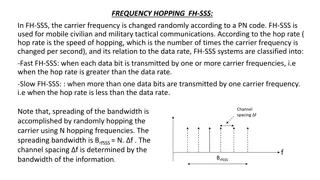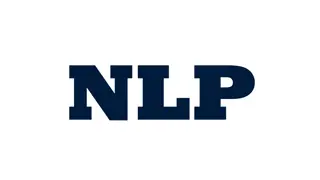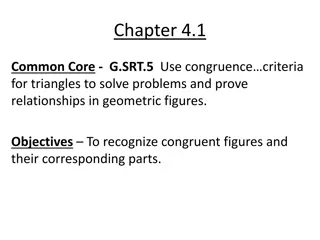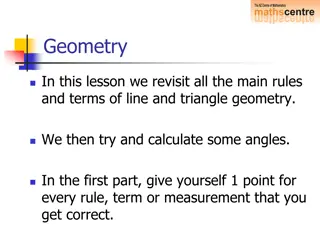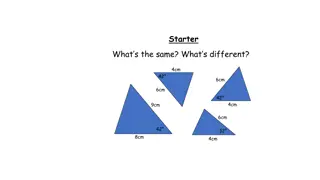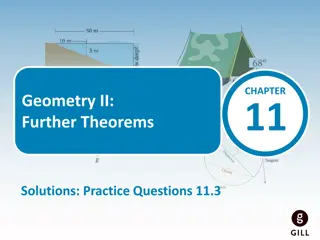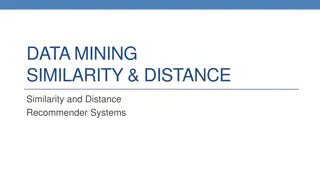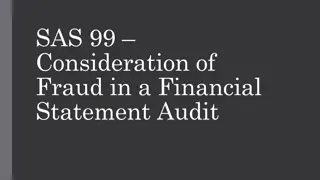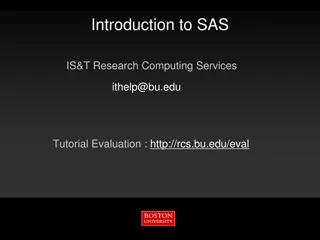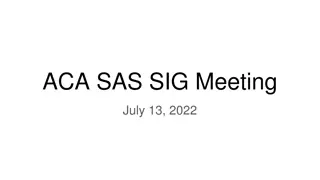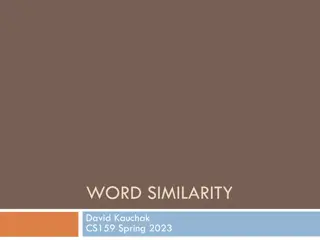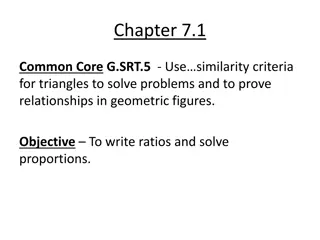Exploring Triangle Similarity: AA, SSS, and SAS Methods
Delve into the concepts of triangle similarity using the AA, SSS, and SAS methods. Understand how to verify and prove triangles are similar, identify congruent angles, and write proportions. Discover examples illustrating these principles through clear explanations and visual aids.
Uploaded on Sep 30, 2024 | 0 Views
Download Presentation

Please find below an Image/Link to download the presentation.
The content on the website is provided AS IS for your information and personal use only. It may not be sold, licensed, or shared on other websites without obtaining consent from the author.If you encounter any issues during the download, it is possible that the publisher has removed the file from their server.
You are allowed to download the files provided on this website for personal or commercial use, subject to the condition that they are used lawfully. All files are the property of their respective owners.
The content on the website is provided AS IS for your information and personal use only. It may not be sold, licensed, or shared on other websites without obtaining consent from the author.
E N D
Presentation Transcript
Warm Up Solve each proportion. 1. 2. 3. x = 8 z = 10 4. If QRS ~ XYZ, identify the pairs of congruent angles and write 3 proportions using pairs of corresponding sides. Q X; R Y; S Z;
Objectives Prove certain triangles are similar by using AA, SSS, and SAS. Use triangle similarity to solve problems.
There are several ways to prove certain triangles are similar. The following postulate, as well as the SSS and SAS Similarity Theorems, will be used in proofs just as SSS, SAS, ASA, HL, and AAS were used to prove triangles congruent.
Example 1: Using the AA Similarity Postulate Explain why the triangles are similar and write a similarity statement. Since , B E by the Alternate Interior Angles Theorem. Also, A D by the Right Angle Congruence Theorem. Therefore ABC ~ DEC by AA~.
Check It Out! Example 1 Explain why the triangles are similar and write a similarity statement. By the Triangle Sum Theorem, m C = 47 , so C F. B E by the Right Angle Congruence Theorem. Therefore, ABC ~ DEF by AA ~.
Example 2A: Verifying Triangle Similarity Verify that the triangles are similar. PQR and STU Therefore PQR ~ STU by SSS ~.
Example 2B: Verifying Triangle Similarity Verify that the triangles are similar. DEF and HJK D H by the Definition of Congruent Angles. Therefore DEF ~ HJK by SAS ~.
Check It Out! Example 2 Verify that TXU ~ VXW. TXU VXW by the Vertical Angles Theorem. Therefore TXU ~ VXW by SAS ~.
Example 3: Finding Lengths in Similar Triangles Explain why ABE ~ ACD, and then find CD. Step 1 Prove triangles are similar. A A by Reflexive Property of , and B C since they are both right angles. Therefore ABE ~ ACD by AA ~.
Example 3 Continued Step 2 Find CD. Corr. sides are proportional. Seg. Add. Postulate. Substitute x for CD, 5 for BE, 3 for CB, and 9 for BA. Cross Products Prop. x(9) = 5(3 + 9) 9x = 60 Simplify. Divide both sides by 9.
Check It Out! Example 3 Explain why RSV ~ RTU and then find RT. Step 1 Prove triangles are similar. It is given that S T. R R by Reflexive Property of . Therefore RSV ~ RTU by AA ~.
Check It Out! Example 3 Continued Step 2 Find RT. Corr. sides are proportional. Substitute RS for 10, 12 for TU, 8 for SV. RT(8) = 10(12) Cross Products Prop. 8RT = 120 Simplify. RT = 15 Divide both sides by 8.
Example 4: Writing Proofs with Similar Triangles Given: 3UT = 5RT and 3VT = 5ST Prove: UVT ~ RST
Example 4 Continued Statements Reasons 1. Given 1. 3UT = 5RT 2. 2. Divide both sides by 3RT. 3. 3VT = 5ST 3. Given. 4. Divide both sides by3ST. 4. 5. Vert. s Thm. 5. RTS VTU 6. UVT ~ RST 6. SAS ~ Steps 2, 4, 5
Check It Out! Example 4 Given: M is the midpoint of JK. N is the midpoint of KL, and P is the midpoint of JL.
Check It Out! Example 4 Continued Statements Reasons 1. Given 1. M is the mdpt. of JK, N is the mdpt. of KL, and P is the mdpt. of JL. 2. 2. Midsegs. Thm 3. 3. Div. Prop. of =. 4. JKL ~ NPM 4. SSS ~ Step 3
Example 5: Engineering Application The photo shows a gable roof. AC || FG. ABC ~ FBG. Find BA to the nearest tenth of a foot. From p. 473, BF 4.6 ft. BA = BF + FA 6.3 + 17 23.3 ft Therefore, BA = 23.3 ft.
Check It Out! Example 5 What if ? If AB = 4x, AC = 5x, and BF = 4, find FG. Corr. sides are proportional. Substitute given quantities. 4x(FG) = 4(5x) Cross Prod. Prop. Simplify. FG = 5
You learned in Chapter 2 that the Reflexive, Symmetric, and Transitive Properties of Equality have corresponding properties of congruence. These properties also hold true for similarity of triangles.
Lesson Quiz 1. Explain why the triangles are similar and write a similarity statement. 2. Explain why the triangles are similar, then find BE and CD.
Lesson Quiz 1. By the Isosc. Thm., A C, so by the def. of , m C = m A. Thus m C = 70 by subst. By the Sum Thm., m B = 40 . Apply the Isosc. Thm. and the Sum Thm. to PQR. m R = m P = 70 . So by the def. of , A P, and C R. Therefore ABC ~ PQR by AA ~. 2. A A by the Reflex. Prop. of . Since BE || CD, ABE ACD by the Corr. s Post. Therefore ABE ~ ACD by AA ~. BE = 4 and CD = 10.
